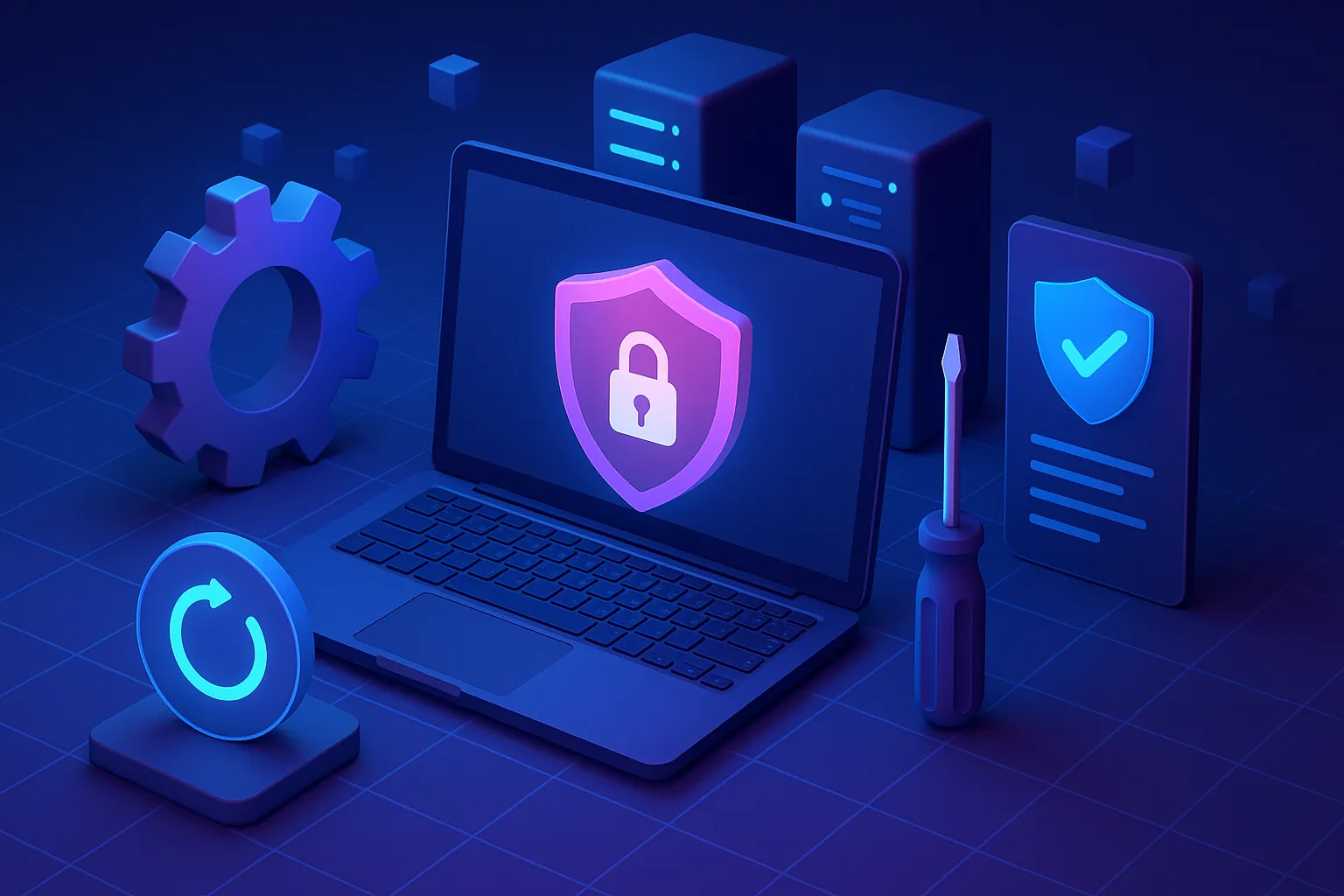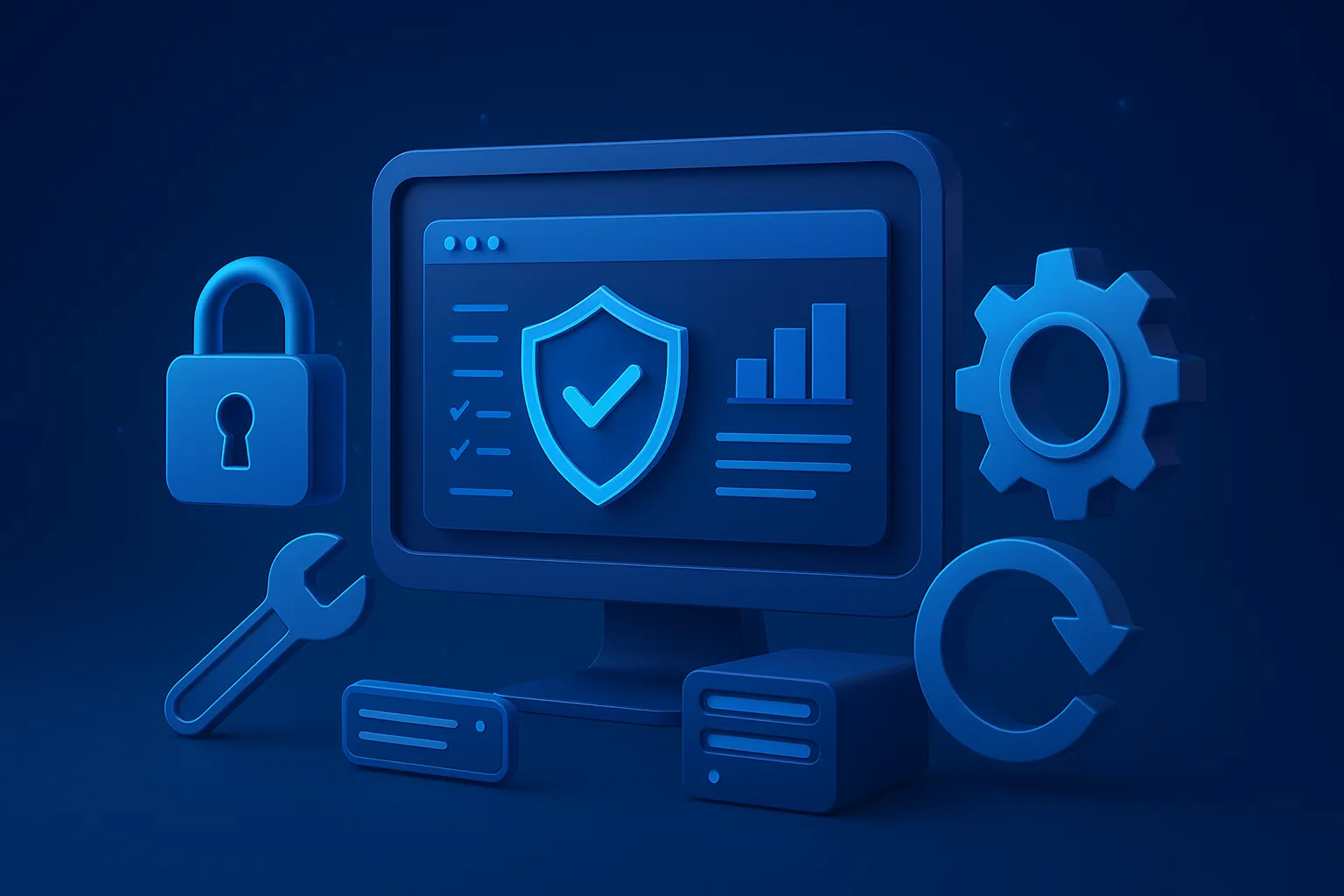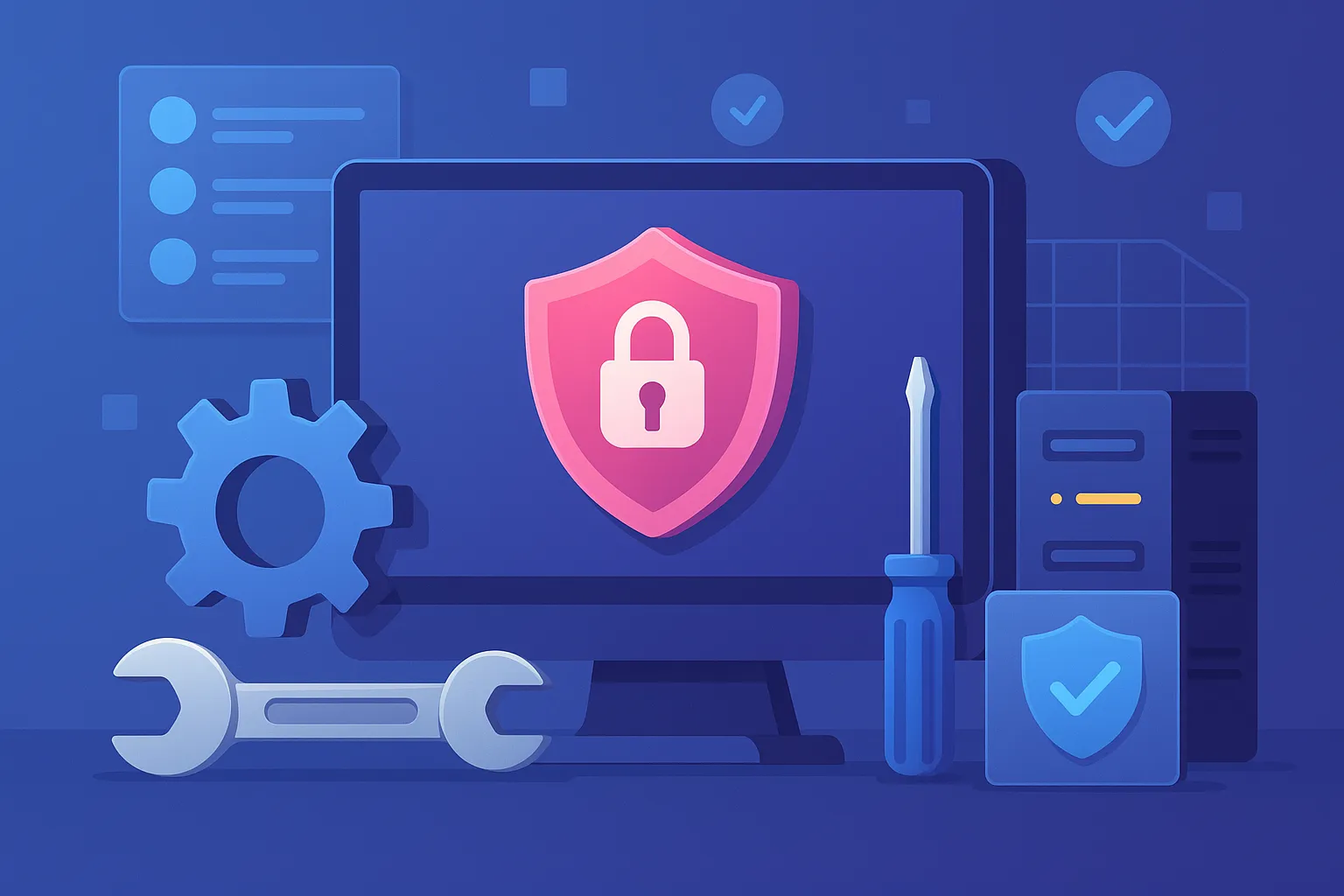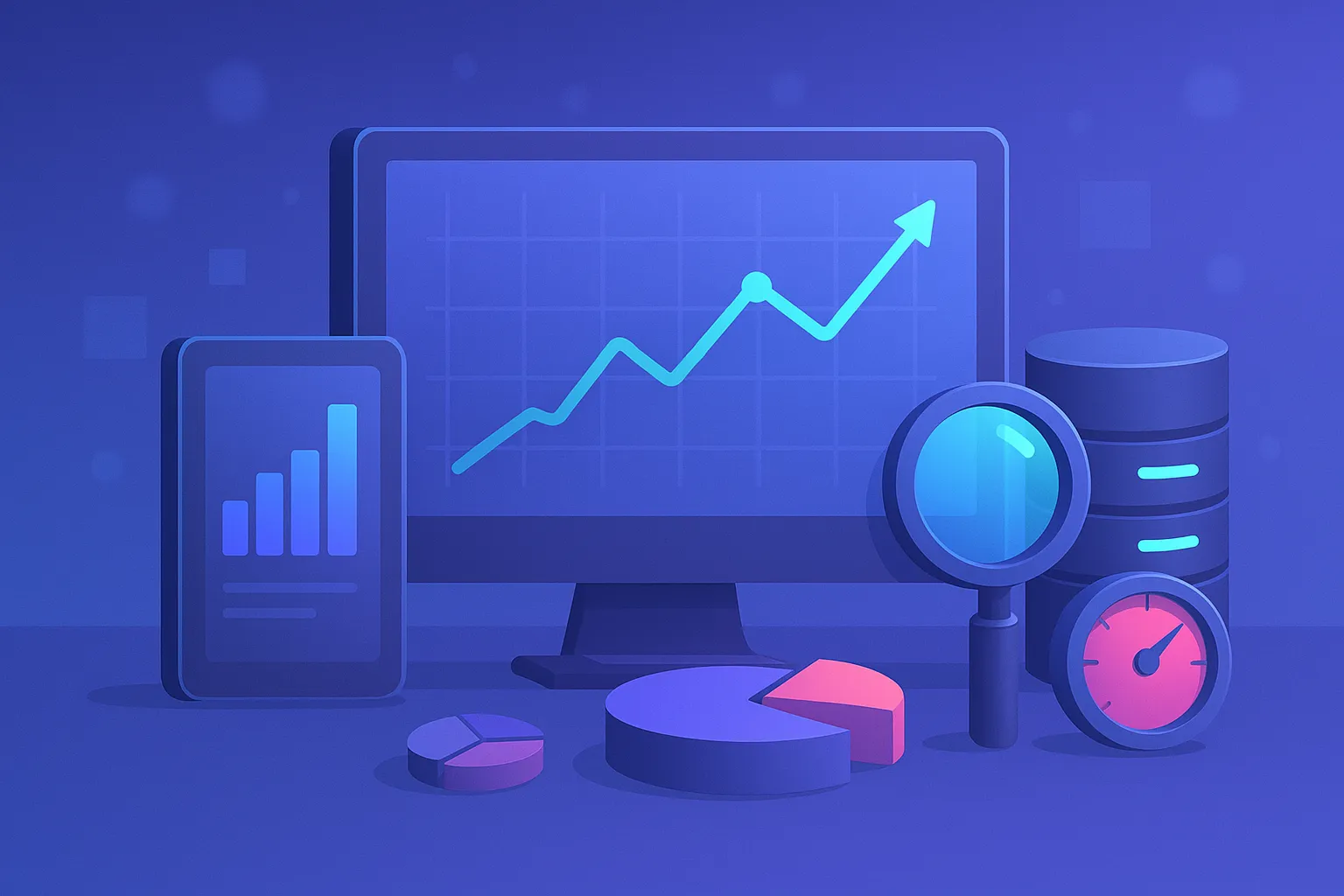October 21, 2025
October 21, 2025

A reliable system is the foundation of every successful business. But when updates are skipped or maintenance is delayed, even minor issues can escalate into major problems from data breaches to costly downtime. Regular system maintenance and updates ensure that your software, servers, and networks stay secure, efficient, and fully optimized. By continuously improving both security and performance, businesses can prevent unexpected failures, enhance user experience, and keep their operations running smoothly in today’s fast-paced digital landscape.
System maintenance and updates refer to the ongoing process of keeping IT systems, software, and infrastructure running at peak performance while ensuring they remain secure and reliable. These two activities go hand in hand but serve slightly different purposes in maintaining the overall health of your technology environment.
System maintenance involves routine tasks aimed at preserving system stability and efficiency. This can include checking server logs, cleaning up temporary files, monitoring performance metrics, updating configurations, and resolving minor software errors before they become major issues. Regular maintenance ensures that your system continues to operate smoothly, prevents resource bottlenecks, and helps detect potential risks early.

System updates, on the other hand, focus on improving or enhancing the system itself. Updates may include installing new versions of operating systems, applying security patches, upgrading software applications, or updating firmware. These updates fix known bugs, close security vulnerabilities, and introduce new features that enhance performance or user experience.
When combined, maintenance and updates form a proactive approach to system management. Instead of waiting for problems to occur, businesses that invest in these processes ensure consistent uptime, stronger protection against cyber threats, and better overall performance.
In today’s fast-evolving digital landscape, system maintenance and updates are not optional, they are essential to keep your business running securely and efficiently.
Regular system maintenance and updates are the cornerstone of a secure and high-performing IT environment. They not only keep your software and infrastructure in good shape but also protect sensitive business data, prevent cyberattacks, and ensure your systems run efficiently. Here’s how they make a difference in both security and performance.
A secure IT environment is built on proactive management. Regular maintenance and updates are the first line of defense against data breaches and cyberattacks, helping you stay one step ahead of potential threats.
Closing Security Vulnerabilities
Every system, no matter how advanced, contains potential weak points. Over time, developers discover and patch these vulnerabilities through updates.
When these patches are ignored, hackers can exploit them to access confidential data or disrupt operations. Keeping your systems updated ensures you’re always protected against the latest known threats, much like installing a stronger lock before an intruder even tries the door.
Preventing Malware and Ransomware Attacks
Cybercriminals often target outdated systems because they’re easier to infiltrate. Without timely updates, your business becomes an open invitation for malware or ransomware attacks.
Regular system maintenance ensures that firewalls, antivirus tools, and intrusion detection systems are always functioning with the latest security intelligence, reducing exposure to emerging threats and ensuring your defense layers stay strong.
Ensuring Compliance and Data Protection
Beyond defense, maintenance also ensures compliance with global data security standards such as GDPR, ISO 27001, and SOC 2. These frameworks require regular patching, monitoring, and auditing.
Staying compliant not only protects sensitive information but also reinforces your reputation as a trustworthy partner in a competitive digital marketplace.

While security keeps your business safe, performance keeps it efficient. Even the most secure system loses value if it runs slowly or crashes unexpectedly. Regular system maintenance and updates directly contribute to faster, more reliable operations that enhance productivity and user satisfaction.
Optimizing System Resources
Over time, systems collect redundant files, outdated logs, and unnecessary processes that slow everything down. Maintenance clears this digital clutter, freeing up storage, improving RAM usage, and maximizing CPU efficiency.
As a result, applications load faster, transactions process smoothly, and employees can work without frustrating delays.
Fixing Bugs and Improving Stability
Every software update comes with important fixes that resolve bugs and improve system stability. These updates ensure compatibility between different tools and operating environments, minimizing crashes or unexpected behavior.
When systems run smoothly, users experience fewer disruptions, and teams can stay focused on meaningful work instead of troubleshooting.
Reducing Downtime and Operational Costs
Downtime is expensive, not just in lost revenue, but also in lost trust. Routine maintenance helps detect potential issues early, preventing unexpected system failures.
By resolving small problems before they escalate, businesses can reduce emergency repair costs and extend the lifespan of their infrastructure. The result is a more predictable, cost-efficient IT ecosystem that supports long-term growth.
Ultimately, maintenance and updates are about future-proofing your technology. A system that’s secure today but neglected tomorrow will eventually become a liability.
By investing in continuous improvement, businesses build a reliable foundation that can handle increased demand, adapt to new technologies, and maintain consistent performance. When your systems are healthy and up to date, your organization can focus on innovation instead of recovery.
In short, system maintenance keeps your business protected, and system updates keep it performing at its best. Together, they form the backbone of a secure, efficient, and resilient IT environment, one that enables your business to grow confidently in an ever-changing digital world.
Maintaining and updating your systems isn’t just about installing patches or running cleanup scripts. It’s about building a disciplined, proactive strategy that ensures every part of your IT ecosystem remains secure, efficient, and aligned with business goals.
Below are some best practices that organizations can follow to make maintenance and updates not only effective but also sustainable over time.

Consistency is key to reliable system performance. Without a defined plan, maintenance tasks often get delayed until a problem arises by which point, it’s usually too late. Create a structured maintenance calendar that outlines what needs to be done, how often, and by whom.
A well-designed schedule typically includes:
This proactive approach minimizes downtime and ensures that maintenance becomes a routine, not a reaction.
Automation is one of the most effective ways to reduce human error and save valuable IT resources. Modern tools can handle repetitive tasks like patch deployment, system scanning, and log analysis, allowing IT teams to focus on higher-level improvements.
Implementing automation helps ensure that updates are applied consistently across all systems, reducing security gaps caused by missed or incomplete updates.
Additionally, automated notifications can alert administrators to failed updates or performance irregularities before they escalate into bigger issues.
Even critical updates can sometimes introduce new bugs or compatibility problems. That’s why every update should go through a controlled testing environment before being rolled out to production systems.
By creating a staging or sandbox environment, your team can evaluate how updates interact with existing applications, databases, and integrations.
This testing process ensures stability, reduces downtime, and gives your IT department confidence that the update will not disrupt business operations.
Before any update or major maintenance activity, always back up your data. No matter how well-tested an update is, there’s always a small chance something could go wrong and a reliable backup is your best insurance policy.
Best practices include:
Comprehensive backup management ensures business continuity, even in the event of unexpected failures.
Maintenance doesn’t end after an update is installed. Continuous monitoring helps detect emerging performance issues, track system health, and ensure that every update delivers the intended benefits.
Use real-time monitoring tools to track CPU load, memory usage, network activity, and application performance.

Data collected from these tools can be analyzed to identify patterns for instance, recurring bottlenecks or frequent error logs, allowing you to address the root causes rather than just symptoms.
Comprehensive documentation is the foundation of effective system management. It helps your team understand what has been updated, when, and why, making troubleshooting faster and more transparent.
Maintain clear records for each maintenance activity, including:
This documentation serves as a roadmap for future maintenance and ensures continuity, even if team members change.
System maintenance is a shared responsibility that extends beyond the IT department. Employees should understand how maintenance activities might affect their work and why updates are necessary.
Regularly communicate scheduled downtimes, new security policies, and changes in workflow. Training sessions can also help staff recognize security threats like phishing or malware, reducing risks caused by human error.
A well-informed team not only minimizes disruptions but also contributes actively to maintaining system health and security.
Sometimes, in-house teams don’t have the bandwidth or expertise to manage complex system environments. Collaborating with a trusted IT partner ensures that maintenance and updates are handled with precision, compliance, and best-in-class practices.
An experienced partner like Serdao can provide ongoing monitoring, security patch management, and performance optimization, ensuring your systems remain stable, compliant, and ready for future growth.
Effective system maintenance and updates are not one-time tasks, they’re part of an ongoing strategy that keeps your digital infrastructure resilient and competitive.
By following these best practices, organizations can prevent costly downtime, strengthen security, and ensure that every system consistently performs at its peak, setting the stage for long-term business success.
At Serdao, we understand that system maintenance and updates are more than just technical support routines, they’re what keep your business running smoothly every day. Our goal is to make sure your systems stay secure, stable, and optimized without disrupting your operations.
We start by getting to know your infrastructure, identifying weak points, and creating a customized maintenance plan that fits your business size, technology stack, and growth goals. From there, our team handles the full process from routine monitoring and security patching to performance optimization and version updates, so you can focus on what matters most: your business.
Security is always at the core of our work. We constantly monitor for vulnerabilities, apply updates promptly, and verify every change to ensure system integrity. This proactive approach helps minimize risks of cyberattacks, data breaches, or downtime, issues that could otherwise cause major disruptions.
Beyond maintenance, Serdao takes performance seriously. We fine-tune configurations, analyze system loads, and identify opportunities to improve speed and efficiency. Whether it’s optimizing your cloud infrastructure or enhancing server response times, we make sure your system performs at its best around the clock.
Most importantly, we believe in transparency and partnership. Serdao keeps your team informed every step of the way with clear reports, detailed documentation, and straightforward communication. You’ll always know what’s been done, why it’s important, and how it benefits your operations.
In short, when you partner with Serdao, you’re not just outsourcing maintenance, you’re gaining a trusted technology ally committed to keeping your systems secure, reliable, and ready for the future.
Conclusion
System maintenance and updates are not just background tasks, they are the foundation of a secure and high-performing digital environment. When maintained properly, systems run smoother, respond faster, and stay resilient against ever-evolving security threats.
For businesses, this consistency translates into real advantages: fewer interruptions, better productivity, and greater trust from customers and partners alike. A well-maintained system doesn’t just work, it empowers your entire organization to move forward with confidence.
At Serdao, we take that responsibility seriously. Our team combines technical expertise with a proactive mindset to keep your infrastructure stable, optimized, and ready for the next challenge. We don’t just maintain systems, we help businesses grow stronger through reliability, security, and performance.